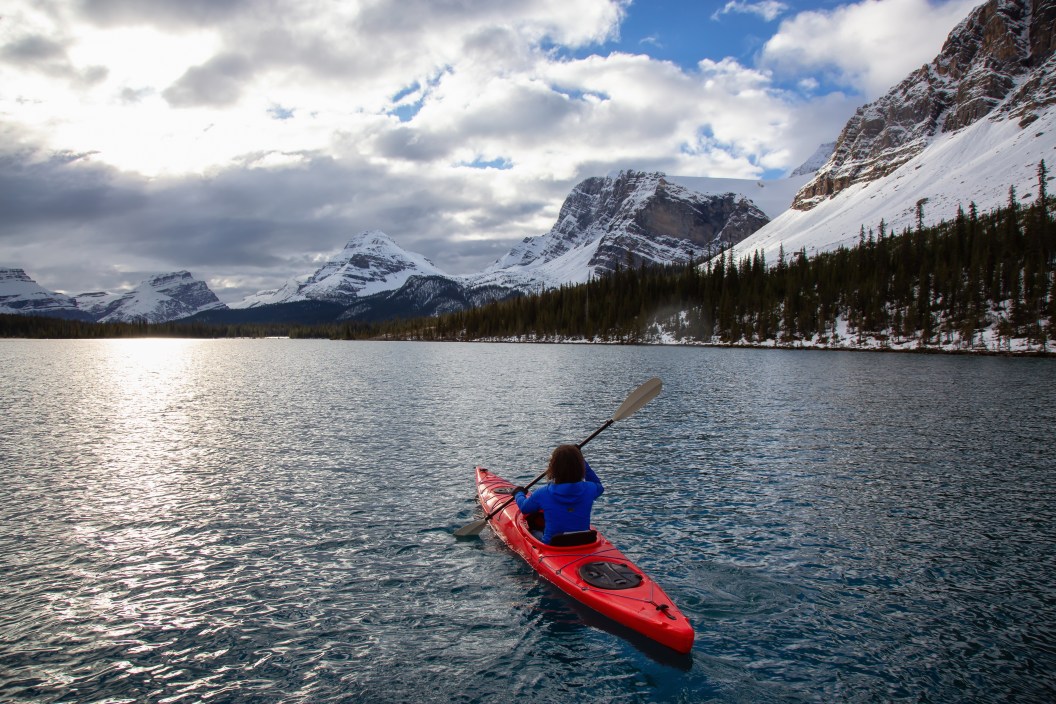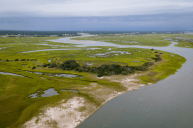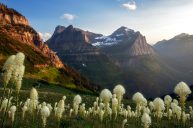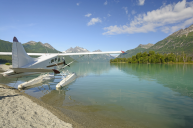Paddle on a lake beneath stunning mountain peaks, follow a meandering river through desert canyons, or navigate bucket-list whitewater rapids. However you prefer to explore via kayak, the U.S. National Parks provide a fantastic array of scenery.
From Maine to Florida, Alaska to Arizona, just about every corner of the country is covered in this roundup of some of the best national parks for kayaking. Be sure to spend a little time preparing your boat and looking up regulations before venturing out, as many parks require permits and aquatic invasive species (AIS) stickers and inspections. Do your part to protect these waters by following the rules and being a responsible boater.
1. Grand Canyon National Park, Arizona
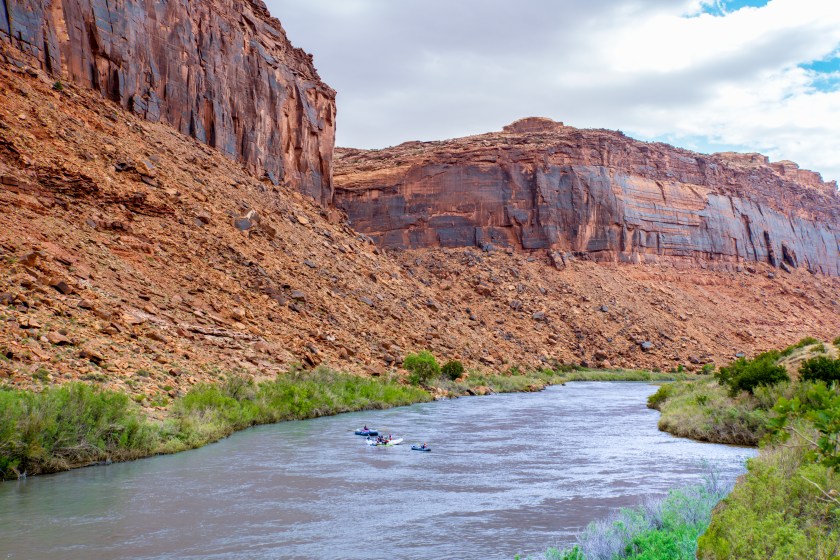
Getty Images, Robert Michaud
A river trip through the Grand Canyon is a life-list goal for many experienced and adventurous paddlers who want to explore the iconic Colorado River. But be warned: This is a highly technical river, so be sure you have the appropriate level of advanced skills and experience for this endeavor.
Trip lengths can vary from a day to more than three weeks. Paddlers can join a commercial outfitter to get on the river—which often involves signing up at least a year in advance—or apply for one of the highly sought-after, non-commercial permits for a private trip. In 2006, the park implemented a weighted lottery system for permits for longer non-commercial trips, replacing the waitlist that stretched to over 25 years. The commercial river season is generally April through October, though the area gets very hot in the summer, so shoulder seasons are preferred by some.
2. Glacier National Park, Montana
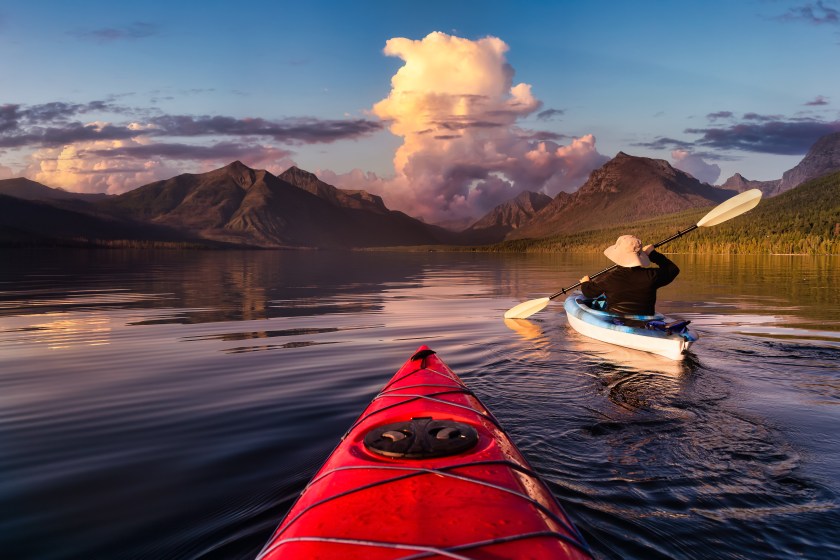
edb3_16/Getty Images
When you kayak in Montana's Glacier National Park, don't forget to look up to admire the park's majestic peaks, and maybe even spy an eagle flying overhead. Summer is the best time for kayaking in the park weather-wise, and because it offers the best access to the park's lakes and more services are available.
If you choose to bring your own boat in the park, an AIS inspection is required, and you must be in compliance with all Glacier National Park rules and regulations. Glacier National Park also requires vehicle reservations, so be sure to plan in advance.
Renting directly at a lake is also an option, and rentals are available at a number of locations throughout the park. Lake McDonald is a large lake offering gorgeous views of the park as well as rentals. Many Glacier and Two Medicine Lake also offer stunning paddling and rentals.
3. Everglades National Park, Florida
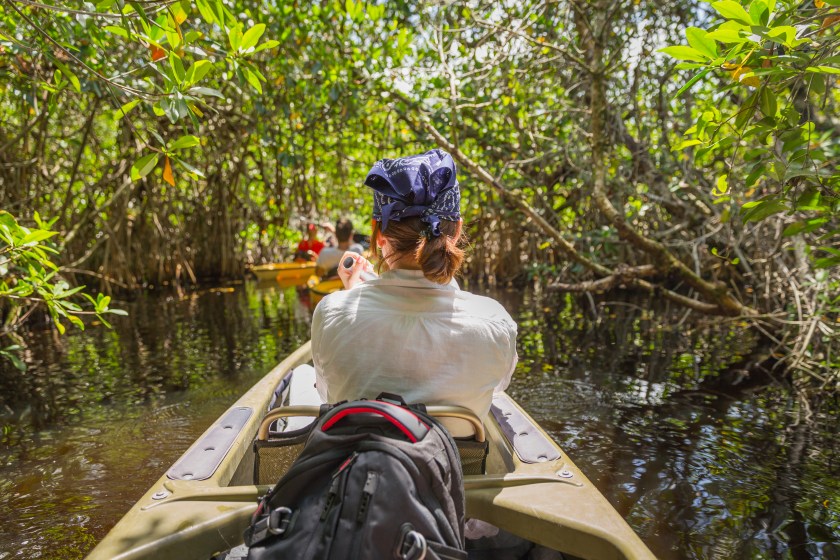
Getty Images, Mariakray
Whether you're looking for small freshwater marshes or the big open sea, and a short, easy paddle or a challenging multi-day adventure, Florida's Everglades National Park has you covered. Several launches are available, and you can even rent a kayak if you don't want to bring your own.
Some of the best kayaking in Everglades National Park includes Nine Mile Pond, which features a peaceful kayak trail that's just over 5 miles with great views of birds and wildlife. The Sandfly Loop offers an opportunity to dock on Sandfly Island for a hike and picnic to break up the five miles of paddling. Kayaking in and out of Turner River will take you a full day, and you'll see a little bit of everything along the way. For a challenge, Hell's Bay Canoe Trail is great for experienced kayakers, and you can even camp along the way with a wilderness camping permit.
Kayakers are encouraged to complete the park's Boater Education Program and required to follow all park rules and regulations. Between December and April is the best time to kayak in the Everglades, so it's a great wintertime activity when it's boating season nowhere else!
4. Lake Mead National Recreation Area, Arizona
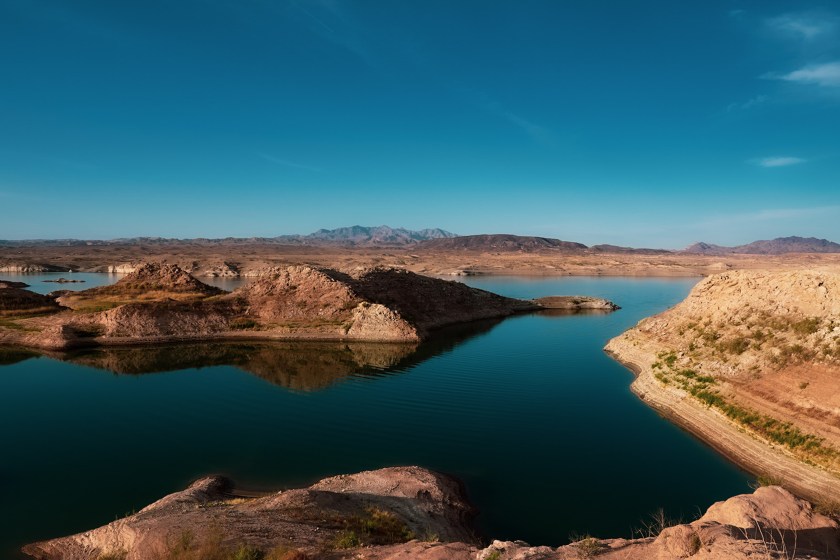
John Hecker/Getty Images
Located in Arizona and Nevada, Lake Mead National Recreation Area encompasses 290 square miles of water, making it popular with all kinds of boaters. Summer can be very hot, and spring and fall are a bit more temperate for kayaking.
On Lake Mead, Canoe/Kayak Beach at Hemenway Harbor is a favorite. Lake Mohave's Willow Beach is a popular kayaking spot thanks to its coves, hot springs, and waterfalls. Black Canyon National Water Trail was designated in 2014 and is approximately 30 miles long. Sections of this water trail, located along the Colorado River, offer primitive zones on certain days when motorcraft are limited for a quieter experience. Look for wildlife like desert bighorn sheep as you explore beaches, caves, and hot springs.
Before you go, be sure to brush up on the watercraft rules in regulations, whether you're planning on kayaking, canoeing, or paddleboarding. All are required to follow boating regulations, including having AIS decals because invasive quagga mussels are present in the lakes. Many marinas rent out watercraft, and a number of companies offer guided kayak tours, which offer great opportunities to explore hidden coves.
5. Kenai Fjords National Park, Alaska
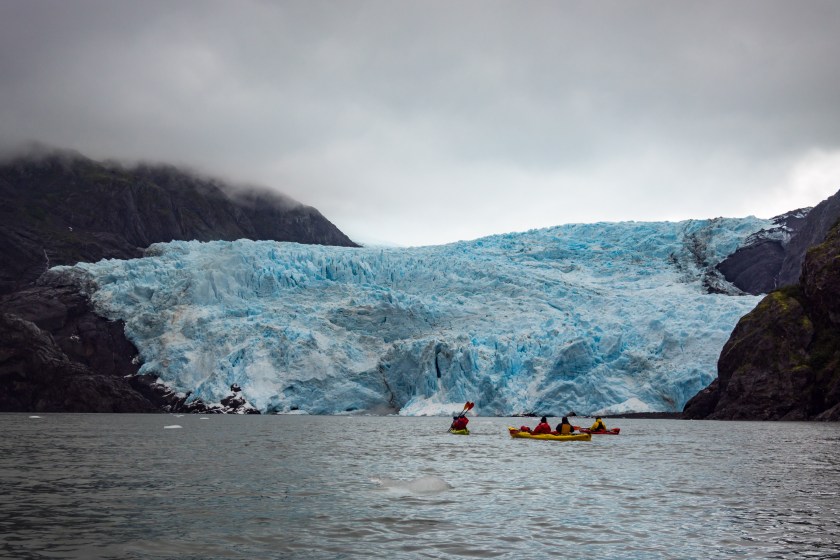
Getty/Jonathan Mauer
If you're an experienced kayaker and up for a challenge, head north to Alaska's Kenai Fjords National Park for your next adventure, where you can explore hundreds of miles of coastline and coves. You'll witness scenery unlike anything in the lower 48, with tidewater glaciers, monumental mountains, and diverse marine life.
One of the most popular kayaking areas in Kenai Fjords National Park is Bear Glacier Lagoon. The lagoon features giant icebergs you can examine, but be sure to keep a safe distance. Hazards like glacial lake outburst floods exist, and the park notes people should consider traveling with a guide who has local knowledge and expertise. Kayakers generally access the park with a guide or by water taxi or charter boat, and some fly in. Conditions can be rough and unpredictable, so be sure you're prepared for the difficult paddle and to follow all park regulations, including those for storing food properly and disposing of human waste. The best time to kayak Kenai Fjords National Park is in the summer.
6. Big Bend National Park, Texas
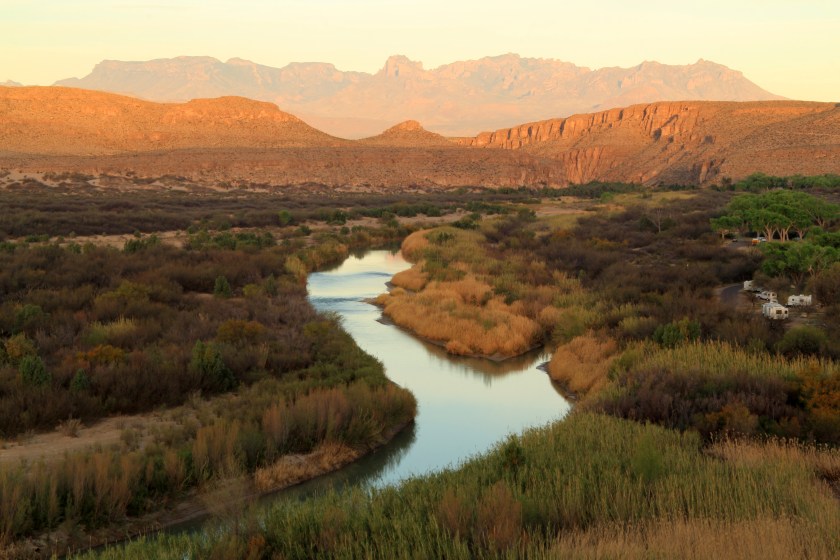
Getty Images, Wilsilver77
You can enjoy plenty of opportunities to kayak, canoe, or raft the Rio Grande River and its many tributaries in Big Bend National Park in Texas. On the water, you'll pass through giant canyons and paddle by barren deserts while witnessing lots of wildlife. Plan to travel to Big Bend National Park between September and February for the best kayaking.
One of the most popular routes in Big Bend National Park is the 33-mile trip through Boquillas Canyon. It's a relatively easy paddle you can split between several days and camp along the river by the Mexico border. It's a one-way trip, so you'll have to bring two cars, or you can use a shuttle service and rent all the gear you'll need. All day and overnight river users must obtain a backcountry permit before putting their boats in the water.
7. Acadia National Park, Maine
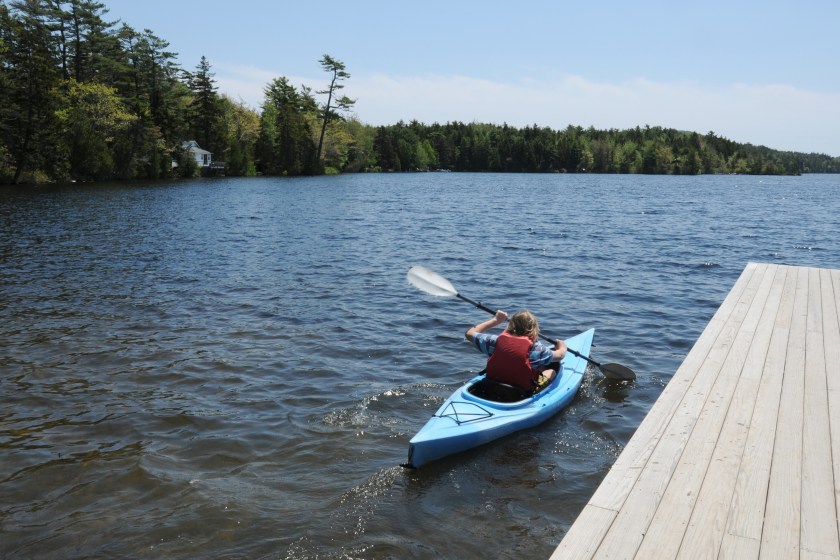
Getty Images, NetaDegany
Situated along the Atlantic coast of Maine, Acadia National Park provides opportunities for paddling both sea and freshwater, as well as guided tours of the most scenic spots.
At 436 acres, Eagle Lake is the largest in the Maine park and offers views of Cadillac Mountain—and maybe even, yes, an eagle overhead! You may purchase a fishing license for Jordan Pond and fish this 187-acre lake for salmon and trout. Or consider hitting the water for stunning views while you paddle around Frenchman's Bay; beginners are advised to go with a guided tour.
Be sure to check Acadia's boating restrictions for each body of water that you plan to kayak on, as each one has different permitted activities and regulations. For a great paddle in perfect kayak weather, head to Acadia National Park between June and September.
8. Voyageurs National Park, Minnesota
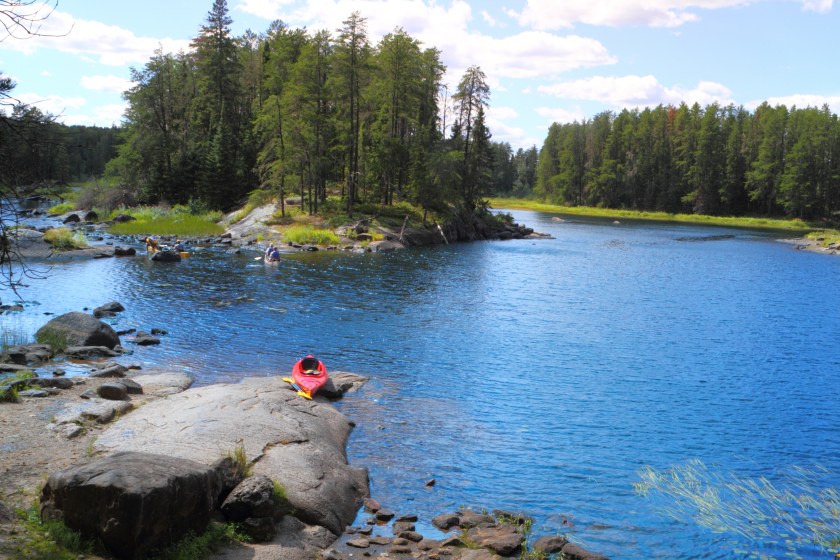
Getty Images, GeorgeBurba
Boasting plenty of camping opportunities and over 200,000 acres, Voyageurs National Park in Minnesota is prime for overnight kayaking adventures. Keep an eye out for moose, bears, wolves, and otters along the way! For the best conditions, kayak in Voyageurs National Park in the summer months.
Backcountry camping is one of the best ways to experience this water-based national park. A backcountry trip takes a little extra planning. The National Park Service has canoes stationed in the backcountry for campers to use to reach their campsites, though you must arrange everything in advance (and have the combination code to access the canoe). You may also need to arrange a way to get to the backcountry trailheads, such as a water taxi service.
9. North Cascades National Park, Washington
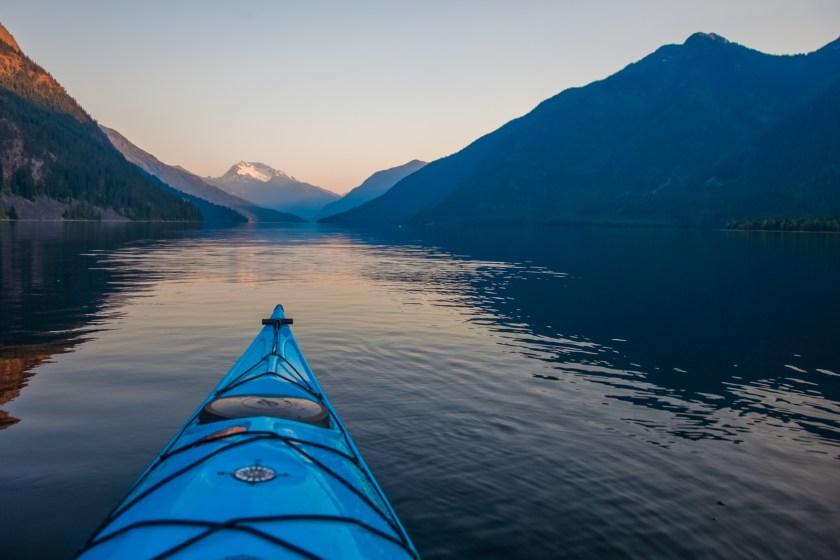
Getty Images, fdastudillo
With its Pacific Northwest wildlife and scenery, Washington's North Cascades National Park holds more than 300 glaciers, breathtaking waterfalls, and regional wildlife—plus great kayaking waters.
For example, you might start at Colonial Creek Campground and enjoy a day trip on the beautiful Diablo Lake. Or you can spend several days paddling and camping along Ross Lake, complete with backcountry boat access—just be prepared for challenging and windy conditions, and be sure to obtain a backcountry camping permit.
Before you go, check the rules and regulations for whichever part of the complex you visit, and know each area can have different rules. The best time to check out North Cascades National Park is in the height of summer.
